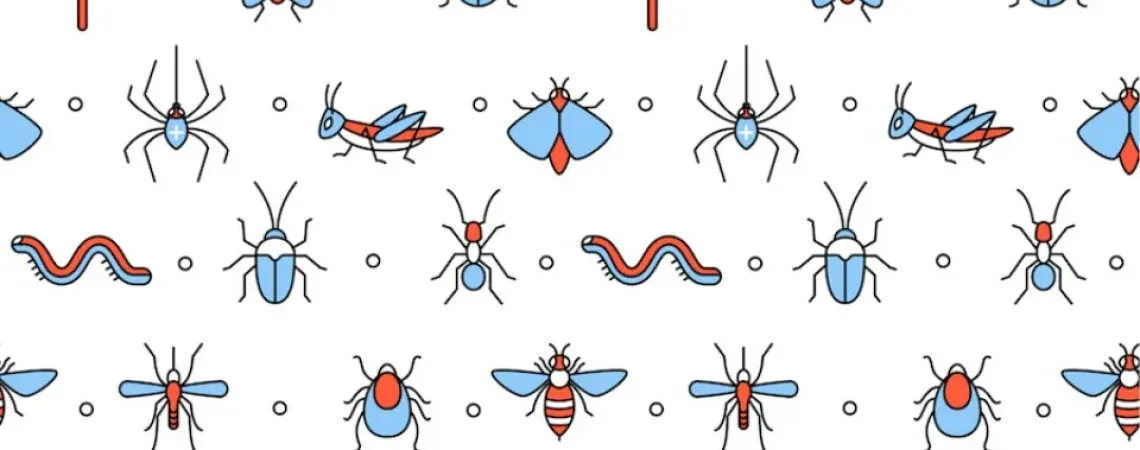
In the future, could we really trade our steak for insects? It’s a whimsical subject, but it doesn’t sound very appetizing!
At first glance, ‘’Eating insects’’ or entomophagy seems strange for us Quebecers-North-Americans-member-of-the-industrialized-world. It’s normal, insects are not part of our eating habits... unless they make their way in our plate inadvertently ;).
However, in Asia and Africa, a variety of insects are consumed on a regular basis and that by a large number of people (2 millions) !
To make you drool, here are a few examples of delicious insects that are regularly eaten by our neighbors : beetles, caterpillars, bees, wasps, ants, locusts, crickets, grasshoppers, cicadas, scale bugs, termites, dragonflies, flying insects and even more!
Between us, it clearly is a taste that requires acquiring. However, consuming insects can be healthy and eco-friendly! First, let’s discuss those benefits and then we can discuss how to include these small hexapodes in our plates.
Insects, healthy food?
Insects are a complete and lean source of protein. The very little amount of fat they contain can be rich in omega-3’s and omega-6’s, depending on the food that’s fed to the insects by the breeder.
For example, in Quebec, crickets are the most known. They are rich in iron, calcium and fibre. Iron is mostly found in meat, calcium is found in dairy and substitutes as well as in fish with bones. Fibre is found in legumes, vegetables and fruits.
Crickets are therefore composed of nutrients that are already present in a variety of food types. It’s almost an all-in-one! What a beautiful gift of nature! Of course, keep in mind that you need to eat other foods to have a balanced diet ! ;)
A little warning : Just like with any other food or animal, insect production needs to be controlled to avoid accidental contamination. Insects contain what they eat so if they come in contact with contaminants like chemicals, they will contain chemicals. Commercial breeders should always be preferred over an amateur ! I love to say : ‘’If it grows on a spill, it will contain a spill! ‘’
Insects, resource-saving in several ways!
Breeding insects saves money on grain, water and space! Beef, pork, chicken or fish breeding use large amounts of grain, water and space compared to insect breeding. As an example, here are the required resources to breed 1 kg of beef compared to 1 kg of crickets :
1 Kg beef : 4 to 10 Kg of grain and 13 500 Litres of water
1 Kg crickets : 2Kg* of grain and only 10 Litres of water!
*They can even eat parts of food that are not edible to humans (think about what goes into the compost).
Insects require very little space to grow and can be breeded anywhere, as long as basic hygiene rules are followed such as breeding in a closed environment with food-grade installations.
This type of breeding being very resource-efficient explains its consumption in other countries!
Incredible growth speed!
Insects have a very short life cycle compared to regular breeded animals. Within the same season, certain insects will produce several generations! This means that instead of waiting weeks or months for the end of the breeding process, the time frame is more around a few days or weeks.
How to start including insects to our plates?
Despite everything, there still is a common thought : ‘’Yuck, insects! ‘’.
I’d like to reply to this : shrimp in nature are not really pretty, yet many people like to eat them! (For those of you who’s heart is strong, try searching ‘’whole raw shrimp’’ on Google Image)
Just like beef, there are several ways to prepare insects. You can marinate whole insects, stir fry them, use them on skewers, etc. For a softer way to enjoy insects, you can also use insect powders or flours !
This type of flour has the advantage of not containing visible insect pieces. We can therefore include it in various dishes. You should note that insect flour is not like wheat flour. It’s more similar to legume flour, meaning it doesn’t rise ! We can integrate insect flour to soups, dressings, pastries, omelettes, tomato sauce dishes, smoothies and more ! Some websites are dedicated to insect flour recipes.
First time
For your first time trying insects, treat yourself :
- Enjoy insect-based products in a nearby insectarium or discovery centre.
- Buy a product that is prepared with insects
- Taste insects on your next trip abroad !
Now that you know more about insect consumption, get set, go ! It hurts the mind more than the taste buds !
*Photo credit : Designed by Freepik






